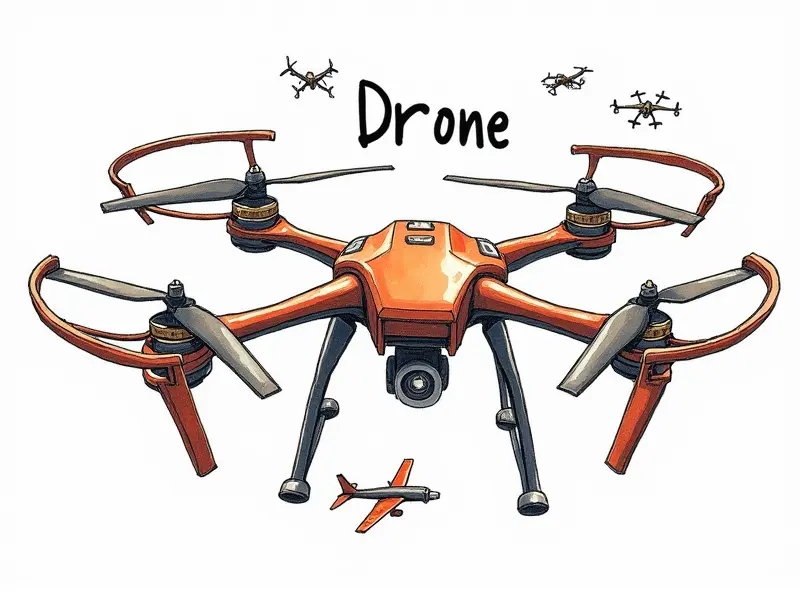Does DJI use GPS in its drones?

Why DJI Uses GPS in Their Drones
DJI, a leading manufacturer of drones and aerial imaging technology, incorporates GPS into their drone models for several critical reasons. The primary purpose is to enhance the stability and precision of flight operations. By integrating GPS, DJI ensures that its drones can maintain a stable hover position, even in windy conditions or when flying over long distances.
Is GPS Essential in DJI Drones?
The use of GPS technology is not merely beneficial but essential for many DJI drone models. It enables features such as waypoint navigation and automated flight paths, which are crucial for professional applications like surveying, mapping, and cinematography. Without GPS, these advanced functionalities would be impossible to achieve.
How Does GPS Work in DJI Drones?
In DJI drones, GPS works by receiving signals from multiple satellites orbiting the Earth. The drone calculates its precise location based on the time it takes for signals to travel between the satellite and the receiver. This information is then used to maintain a stable flight path and enable various automated features.
Benefits of GPS in DJI Drone Operations
- Precision: GPS ensures that drones can fly with pinpoint accuracy, which is crucial for tasks like aerial photography and surveying.
- Stability: By locking onto satellite signals, the drone can maintain a steady hover position even in challenging weather conditions.
- Automation: GPS enables features such as waypoint navigation and automated flight paths, allowing users to program complex maneuvers without manual control.
Understanding GPS Capabilities in DJI Models
DJI offers a range of drone models with varying levels of GPS integration. Higher-end models like the Phantom 4 Pro and Mavic Air 2 feature advanced GPS capabilities, including RTK (Real-Time Kinematic) technology for ultra-precise positioning. Lower-tier models may offer basic GPS functionality but lack some of the more sophisticated features.
The Role of GPS in DJI's Drone Technology
GPS plays a central role in DJI’s drone technology by providing essential data for flight control and automation. It enables features such as Return to Home (RTH), obstacle avoidance, and intelligent flight modes that enhance the user experience and operational efficiency.
DJI Drone Features: GPS Integration Explained
GPS integration in DJI drones includes several key features:
- Return to Home (RTH): If the drone loses connection with the controller, it automatically returns to its takeoff point.
- Waypoint Navigation: Users can program specific waypoints for the drone to follow autonomously.
- Obstacle Avoidance: GPS data helps the drone detect and avoid obstacles during flight.
Navigating with GPS on DJI Devices
To navigate effectively using GPS on a DJI device, users should ensure that their drone is properly calibrated and has an unobstructed view of the sky. This allows for accurate signal reception from multiple satellites. Additionally, familiarizing oneself with the specific navigation features available in the DJI GO app can greatly enhance flight planning and execution.
The answer is unequivocally yes—DJI uses GPS extensively across its drone lineup to provide users with unparalleled precision, stability, and automation capabilities. From entry-level models to high-end professional drones, GPS integration is a cornerstone of DJI’s technology.
How DJI Integrates GPS Technology
DJI integrates GPS technology by incorporating it into the flight control system of its drones. This allows for real-time positioning updates and enables advanced features such as waypoint navigation and automated flight paths. The integration is seamless, providing users with a user-friendly interface to manage these capabilities.
Benefits of GPS in DJI Quadcopters
The benefits of GPS in DJI quadcopters are numerous:
- Precision Flight Control: Ensures that the drone can fly with pinpoint accuracy, essential for aerial photography and surveying.
- Enhanced Stability: Helps maintain a stable hover position even in windy conditions or over long distances.
- Advanced Automation: Enables features like waypoint navigation and automated flight paths, making complex maneuvers easier to execute.
Conclusion
The integration of GPS technology by DJI is a testament to the company’s commitment to innovation and user experience. By leveraging GPS capabilities, DJI drones offer unparalleled precision, stability, and automation features that set them apart in the market. Whether you are an amateur hobbyist or a professional photographer, understanding how GPS works in DJI drones can significantly enhance your flight operations.

